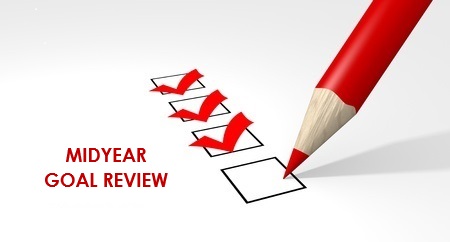We can't find the internet
Attempting to reconnect
Something went wrong!
Hang in there while we get back on track
Performance Improvement Plan: Why and When It’s Necessary
Our Article Full Details

Performance Improvement Plan: Why and When It’s Necessary
Managing employee performance is one of the most crucial responsibilities for any employer. When performance issues arise, addressing them effectively can mean the difference between losing a valuable employee and helping them turn things around. This is where a Performance Improvement Plan (PIP) comes in.
A Performance Improvement Plan (PIP) is one of the most effective tools for turning around an employee’s performance. But when should you implement a PIP, and why is it necessary?
A PIP is more than just a formal procedure—it's an opportunity to reset expectations, provide support, and give employees a structured path to improvement. When used effectively, it can help struggling team members get back on track and contribute meaningfully to the organization.
What Is a Performance Improvement Plan (PIP)?
A PIP is a formal document that outlines performance issues, sets clear expectations, and provides a timeline for improvement. It typically includes specific goals, support measures, and regular check-ins to evaluate progress.
However, a PIP isn’t just about monitoring an employee’s work; it’s about giving them the tools and guidance needed to succeed. The goal is to help the employee improve rather than pushing them toward termination.
Why Is a Performance Improvement Plan Necessary?
- Clarifies Expectations
One of the main reasons performance suffers is a lack of clarity around expectations. A PIP allows managers to outline exactly where the employee is falling short and what they need to improve. It provides the employee with a clear understanding of what success looks like, helping to eliminate any confusion about performance standards. - Provides Structure and Support
A PIP isn't just a warning—it's a structured way to offer support. By setting out specific steps, resources, and deadlines, you create a roadmap for improvement. Regular check-ins offer opportunities to provide feedback, identify ongoing challenges, and make necessary adjustments to the plan. - Legal and Procedural Necessity
In cases where performance doesn’t improve despite the PIP, this documentation becomes critical for HR and legal reasons. It demonstrates that the organization gave the employee every opportunity to correct their performance and provided support before considering further actions like demotion or termination. - Saves Valuable Employees
Not every underperforming employee lacks the skills or potential. In many cases, external factors—like personal issues, workload, or inadequate training—are the root cause. A PIP offers the chance to identify and address these underlying issues, enabling valuable employees to regain their footing and contribute effectively. - Improves Team Morale
Allowing poor performance to continue unchecked can affect the entire team’s morale and productivity. Implementing a PIP shows your commitment to maintaining a high standard of performance, which can reinforce a sense of fairness and accountability within the team.
When Is a Performance Improvement Plan Necessary?
Knowing when to implement a PIP is key to its effectiveness. It’s not a tool for every minor issue, but rather for situations where performance concerns are significant and ongoing. Here’s when a PIP may be necessary:
- Repeated Performance Issues
If an employee has received informal feedback about performance issues, but there’s been little to no improvement, a PIP may be the next step. It signals that the performance issues are serious and need immediate attention. - Pattern of Missed Goals
When an employee consistently falls short of their goals, deadlines, or performance metrics, it’s a clear sign that a PIP could help. It provides a structured way to address the gaps between expectations and results, with measurable steps toward improvement. - Attitude and Behavioural Concerns
A PIP isn’t just for performance metrics; it can also address issues like poor communication, negative attitudes, or disruptive behaviour that affect team dynamics. In this case, the plan can focus on improving interpersonal skills, cooperation, and attitude, alongside performance. - After Coaching and Feedback Have Failed
A PIP is often a last resort after informal coaching and regular feedback haven’t worked. It formalizes the improvement process and adds a layer of accountability for both the manager and the employee. At this point, the PIP is necessary to make it clear that further underperformance could lead to serious consequences.
How to Implement a Performance Improvement Plan Effectively
- Be Specific
The more specific the PIP, the better. Vague statements like “improve communication” or “increase productivity” won’t help the employee understand what’s expected. Instead, set measurable, time-bound goals like “provide weekly status reports” or “complete tasks within X timeframe.” - Offer Resources and Support
Make sure the employee has everything they need to succeed. This could include additional training, mentoring, or access to resources that can help them meet expectations. It’s important to show that you are invested in their success. - Create a Timeline for Improvement
Set a reasonable timeline for the employee to improve. Typically, a PIP lasts between 30 and 90 days, depending on the severity of the issue and the nature of the goals. Be sure to schedule regular check-ins to monitor progress and adjust the plan if necessary. - Communicate Transparently
Transparency is key during the PIP process. Make sure the employee understands the consequences if they don’t meet the expectations outlined in the plan. This should be done with empathy, but also with clarity. - Evaluate Progress and Adjust if Needed
During check-ins, review the employee’s progress against the plan. Celebrate small wins, provide constructive feedback, and make adjustments if the original goals need tweaking. The goal is continuous improvement, not just passing a performance test.
A Performance Improvement Plan is a critical tool for addressing underperformance in a constructive and supportive way. It clarifies expectations, offers support, and provides a structured path for improvement, helping both the employee and the organization succeed. By knowing when and how to implement a PIP, you can improve employee performance, retain valuable talent, and foster a culture of accountability.
Prev
What Strategies Can Improve the Experience for New Hires and Why Does It Matter?
Next
From Manager to Mentor: Transitioning into a Coaching Leadership Style





